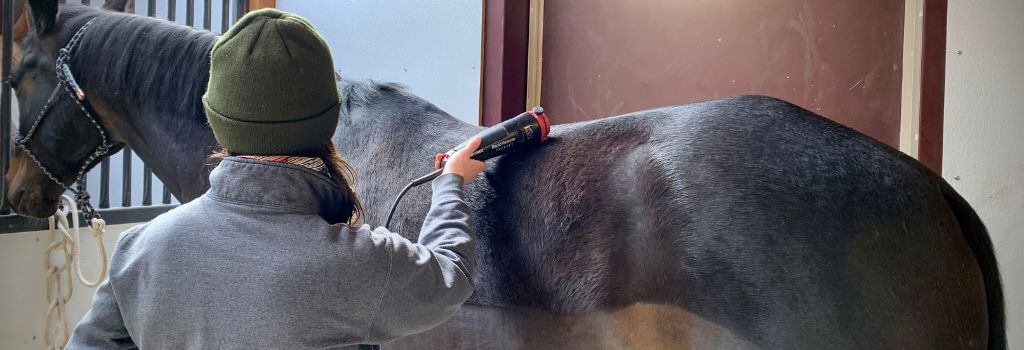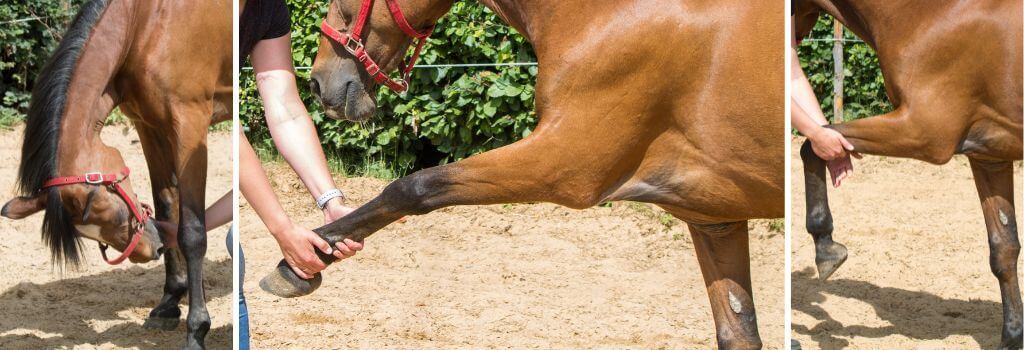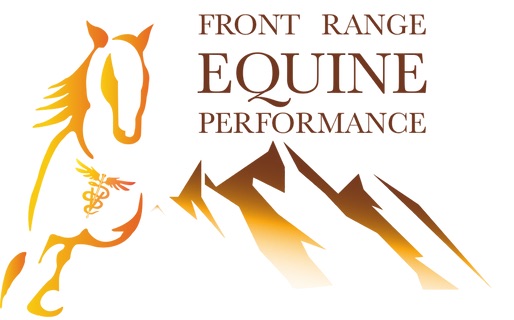Equine veterinary rehabilitation is an essential part of a horse’s recovery from injury, surgery, or chronic conditions. It focuses on restoring optimal physical function, improving mobility, and enhancing a horse's overall quality of life. Whether the horse is a high-performance athlete or a companion animal, rehabilitation can help address injuries, alleviate pain, and prevent further damage. This article will explore how equine rehabilitation works, its benefits, common therapies used, and what horse owners should look for in a rehabilitation program.
What is Equine Veterinary Rehabilitation, and How Can It Benefit a Horse?
Equine veterinary rehabilitation is a specialized approach to managing and improving the physical well-being of horses after an injury or surgery. Its primary goal is to restore normal movement patterns, relieve pain, enhance recovery, and prevent complications. Rehabilitation may be necessary after traumatic injuries, surgical procedures, or in cases of chronic conditions like arthritis, tendonitis, back pain, and ligament sprains.
The benefits of equine rehabilitation include:
- Faster recovery time: Proper rehabilitation can speed up healing and minimize the risk of re-injury.
- Pain management: Many therapies reduce pain and inflammation associated with injuries or surgery.
- Improved mobility, balance, and strength: Rehabilitation strengthens muscles, improves joint mobility, and helps restore balance and flexibility.
- Prevention of complications: Rehabilitation helps prevent scar tissue formation, muscle atrophy, loss of proprioception, and long-term dysfunction.
Common Techniques and Therapies Used in Equine Rehabilitation
Several therapies are employed in equine rehabilitation to address a range of issues. Some of the most popular techniques include:
1. Laser Therapy (Low-Level Laser Therapy or LLLT)
- How it works: Low-level lasers promote cellular regeneration and healing by stimulating tissue repair through light energy.
- Benefits: Reduces inflammation, improves circulation, accelerates tissue healing, and alleviates pain.
- Common uses: Tendon injuries, soft tissue strains, arthritis, and wounds
2. Hydrotherapy
- How it works: Involves the use of water for exercise and therapy, often in a pool or underwater treadmill.
- Benefits: Provides a low-impact environment for rehabilitation, helping to reduce stress on joints and muscles while promoting cardiovascular health.
- Common uses: Rehabilitation after surgery, muscle weakness, and joint conditions.
3. Vibration Therapy
- How it works: A vibration plate gently delivers low-frequency mechanical vibrations through the horse’s body while they stand on it.
- Benefits: Enhances circulation, stimulates muscle activity, and supports lymphatic drainage.
- Common uses: Conditioning, injury recovery, and managing stiffness or inflammation in performance horses.
4. Cryotherapy
- How it works: Targeted cold is applied using ice packs, cold water, or specialized machines to reduce tissue temperature.
- Benefits: Reduces inflammation, decreases pain, and slows cellular metabolism to help healing.
- Common uses: Commonly used post-injury or post-workout to manage swelling, soreness, and soft tissue injuries.
5. Therapeutic Ultrasound
- How it works: Ultrasound uses high-frequency sound waves to create heat deep within tissues, promoting circulation and tissue repair.
- Benefits: Speeds up healing, reduces swelling, and treats muscle, ligament, and tendon injuries.
- Common uses: Soft tissue injuries, tendon and ligament strains, and muscle tightness.
6. Massage Therapy
- How it works: Physical manipulation of muscles and soft tissues to increase blood flow and reduce muscle tension.
- Benefits: Reduces pain, promotes relaxation, and helps alleviate stiffness.
- Common uses: Chronic muscle soreness, muscle imbalances, and post-exercise recovery.
7. Acupuncture
- How it works: Involves inserting thin needles into specific points on the body to stimulate nerve endings and promote healing.
- Benefits: Helps with pain management, improves circulation, and reduces inflammation.
- Common uses: Pain relief, muscle spasms, and chronic conditions like arthritis.
8. Chiropractic
- How it works: Manual adjustments are made to the spine and joints to restore proper alignment and nerve function.
- Benefits: Improves mobility, alleviates pain, and supports overall biomechanics.
- Common uses: Often used to address back pain, poor performance, or gait abnormalities related to musculoskeletal misalignment.
9. Pulsed Electro Magnetic Field (PEMF) Therapy
- How it works: Uses low-frequency electromagnetic waves to stimulate cellular function and improve circulation at the tissue level.
- Benefits: Promotes healing, reduces pain and inflammation, and increases range of motion.
- Common uses: Frequently used for soft tissue injuries, arthritis, and pre- or post-performance recovery.
10. Shockwave Therapy
- How it works: High-energy sound waves are directed at the affected area to stimulate healing.
- Benefits: Breaks down scar tissue, reduces inflammation, and promotes tissue regeneration.
- Common uses: Tendon injuries, osteoarthritis, and chronic soft tissue injuries.

How Does Equine Rehabilitation Differ from Traditional Veterinary Care?
Traditional veterinary care focuses primarily on diagnosing and treating the immediate medical issue, such as prescribing medications or performing surgeries. Rehabilitation, on the other hand, is a long-term, multifaceted approach to restoring physical function. It integrates specific therapeutic techniques that go beyond just managing pain or infection; it works to restore the horse’s physical capabilities and prevent future injuries.
Traditional veterinary care typically addresses acute medical problems, while rehabilitation is geared toward functional recovery, pain management, and overall physical wellness. Rehabilitation may begin once the horse’s immediate medical condition is stable.
Conditions and Injuries Best Suited for Equine Rehabilitation
Equine rehabilitation is particularly useful for:
- Soft tissue injuries (e.g., muscle strains, ligament or tendon damage)
- Joint injuries (e.g., arthritis, joint instability, tendonitis)
- Post-surgical recovery (e.g., after orthopedic surgery)
- Chronic conditions (e.g., laminitis, back pain/kissing spine, and stiffness)
- Neurological issues (e.g., nerve damage affecting coordination or movement)
By addressing these conditions with specialized therapies, horses are often able to regain full or partial function and return to their previous activities.
Improving Long-Term Health and Performance
Equine rehabilitation doesn’t just help horses recover from injuries—it also plays a significant role in improving long-term health and performance. Rehabilitation can help maintain muscle tone, joint mobility, and flexibility. This leads to enhanced performance and reduces the risk of re-injury. Even after recovery, rehabilitation helps prevent imbalances or weaknesses from affecting the horse’s performance, whether they are a competitive athlete or a recreational rider.
What to Look for in a Rehabilitation Facility
When choosing a rehabilitation facility for your horse, look for:
- Qualified staff: Ensure that the facility has certified equine rehabilitation specialists, including veterinarians with expertise in rehabilitation board certified by the American College of Veterinary Sports Medicine & Rehabilitation (ACVSMR), or having advanced training through the Certification in Equine Rehabilitation and Performance Medicine (CERPM) by the University of Florida or Certified Equine Rehabilitation Therapist (CERT) by the University of Tennessee.
- Range of therapies: Choose a facility that offers a wide range of therapeutic options like hydrotherapy, massage therapy, laser therapy, and ultrasound.
- Individualized care: Each horse’s rehabilitation plan should be tailored to their specific injury, condition, and needs.
- Clean, safe, and well-equipped environment: The facility should have state-of-the-art equipment and ensure a safe, clean environment for your horse, including a biosecurity and quarantine protocol.
- Patient monitoring: The program should offer daily monitoring of injuries, weekly progress reports, and plan updates.
Rehabilitation Across Different Disciplines
The rehabilitation process can vary depending on the discipline the horse is involved in. For example:
- Dressage horses may need more emphasis on flexibility and posture correction to ensure smooth and precise movements.
- Jumping horses require rehabilitation programs that focus on strength, coordination, and agility to return to high-impact work.
- Racing horses need therapies to restore speed, power, and stamina, with a focus on joint health and muscle rehabilitation.
- Endurance horses need to restore cardiovascular fitness, muscle endurance, and metabolic efficiency, with careful attention to hydration, electrolyte balance, and gradual increases in workload to prevent fatigue and injury.
Rehabilitation plans should be customized for each discipline’s demands to help horses return to their peak performance.
The Veterinarian’s Role in Rehabilitation
A veterinarian plays a crucial role in creating and overseeing a horse’s rehabilitation plan. They evaluate the horse’s injury, prescribe appropriate therapies, and monitor progress throughout the recovery process. Certified veterinarians with expertise in rehabilitation are essential for developing comprehensive, evidence-based treatment plans and for adjusting the program based on how the horse is responding.
Risks and Challenges in Equine Rehabilitation
Equine rehabilitation is generally safe, but it does come with risks, including:
- Overexertion: If a horse is pushed too hard during rehabilitation, it can delay healing or lead to reinjury.
- Improper therapy: Incorrect use of certain therapies can be ineffective or harmful.
- Inconsistent monitoring: Regular assessments are crucial to ensure that the rehabilitation process is progressing as planned.
To minimize these risks, work with a certified veterinarian or rehabilitation specialist who will guide the process carefully.
Signs a Horse Might Benefit from Rehabilitation
Even if your horse hasn’t experienced a major injury, there are subtle signs that they could benefit from rehabilitation:
- Chronic stiffness or lameness: These can be signs of underlying muscle or joint issues.
- Behavioral changes: If a horse becomes more reluctant to move or is showing signs of discomfort, it may need therapeutic interventions.
- Poor performance: If a horse's performance decreases without an obvious injury, rehabilitation can help address any underlying physical issues.

Certifications and Credentials for Equine Rehabilitation Specialists
Veterinarians specializing in equine rehabilitation often pursue certifications to ensure that they have the necessary skills and knowledge and understand how and when to use certain rehabilitation techniques and equipment to treat a horse’s specific injury. The American College of Veterinary Sports Medicine and Rehabilitation (ACVSMR) offers an advanced certification for veterinarians who meet rigorous educational and practical requirements.
For a veterinarian to reach ACVSMR Diplomate status, they undergo years of additional residency training in sports medicine, lameness, diagnostic imaging (radiology, ultrasound, MRI, CT), surgery, internal medicine, pain management, and rehabilitation techniques. During this time, they must see, treat, and document over 300 unique lameness and rehabilitation cases. After this training, they must pass a rigorous 2-day final exam where they are tested on core knowledge of physiological, medical, surgical, and rehabilitation techniques, and a second species-specific exam consisting of clinical case work-ups, diagnostics, treatment, and rehabilitation plans based on textbook and relevant published research from the previous 5 years. Only after passing all portions of this exam is a veterinarian board certified and allowed to call themselves a Diplomate of the American College of Veterinary Sports Medicine and Rehabilitation (DACVSMR).
Why Work with Certified Equine Rehabilitation Specialists?
Certified equine rehabilitation specialists bring a high level of expertise to the table. They are trained in advanced therapeutic techniques and have the skills to handle complex rehabilitation cases. Horse owners should prioritize working with certified veterinarians to ensure the highest standard of care for their horses.
To find a DACVSMR near you, you can use the “Search for a Diplomate” tool on the ACVSMR website.
Summary
Equine rehabilitation is an invaluable tool in helping horses recover from injuries, surgeries, and chronic conditions, as well as enhancing their performance. By incorporating therapies like laser treatment, hydrotherapy, and ultrasound, horses can heal faster, reduce pain, and improve their mobility. Working with certified rehabilitation specialists ensures that your horse receives the most effective and comprehensive care available, helping them return to their best health and performance. If your horse is facing an injury or showing signs of discomfort, it’s worth considering rehabilitation as part of their recovery plan.
If you have questions and you'd like to reach out to us, you can call us directly at (970) 368-3125, or you can email us at [email protected]. Don't forget to follow us on social media Facebook, Instagram.
